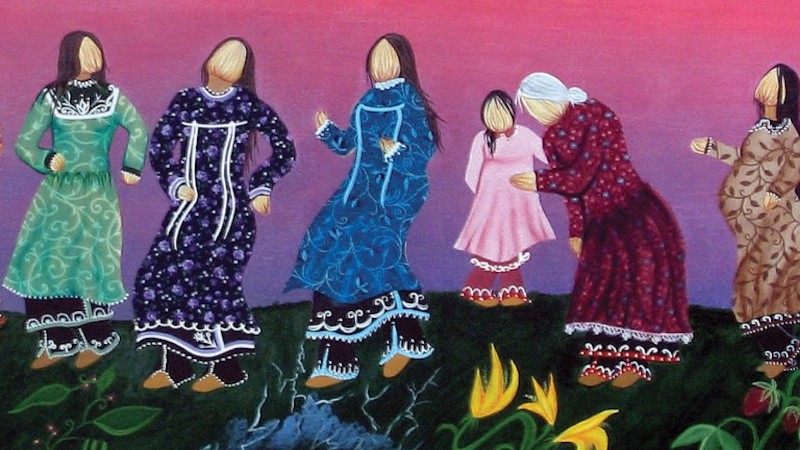
Indigenous Peoples Day is today, a reclamation of what is still too often known as Columbus Day. Instead of celebrating Indigenous genocide and white settler colonialism, it behooves US citizens, especially white ones, to make a point to read Indigenous authors today and every day. Here’s a list of books that came out this year by Indigenous writers you can read in order to help decolonize your bookshelf.
Poetry

American Sunrise by Joy Harjo
(Norton)
In her latest collection, 2019 US Poet Laureate Joy Harjo returns to the Southeast where her ancestors, the Mvskoke people, were forcibly removed under the Indian Removal Act of 1830 to west of the Mississippi. The book opens with a map—a depiction of a line across land, one of many trails of tears. As Harjo explores the grief and mourning of this forced exile, she also tells a story of erasure and survival, of personal and intergenerational loss, and of a new sunrise. Harjo is extremely skilled at using short, deceptively simple lines and stanzas to create imagery that swells with emotion and will not look away from either pain or beauty. We as a nation are blessed to be alive in her time, in the same room as her writing—which is also her warning, her insight, and her voice.
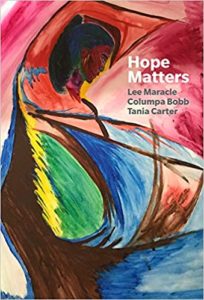
Hope Matters by Lee Maracle, Columpa Bobb, and Tania Carter
(Book*hug)
A collaboration between celebrated poet, novelist, nonfiction writer and editor Lee Maracle (Sto:lo) and her daughters—playwright, director and performer Columpa Bobb and actor, playwright and poet Tania Carter—this poetry collection is a pleasure to read. The three wrote poetry together from the time Bobb and Carter were children, and this book brings together their multifaceted writing styles. Joyful and sad, charting colonial and familial beginnings, it sings with hope and reconciliation in its verse. Hope Matters is a welcome addition to the Maracle library, and to literature as a whole.
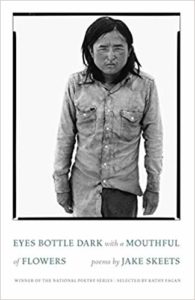
Eyes Bottle Dark With A Mouthful of Flowers by Jake Skeets
(Milkweed Editions)
This debut collection from Skeets (Diné) is striking in every way. From the photograph on the cover—an image of his uncle, who was killed not long after it was taken—to the stark, gorgeous lines within, Eyes Bottle Dark With a Mouthful of Flowers is brimming with engrossing imagery and gripping syntax. In content and in form, Skeets brings both queer and Indigenous ways of thinking and being to living, breathing life, challenging western linguistic habits. It cracks and glitters on every page, and marks the emergence of a major new poetic voice.
Fiction
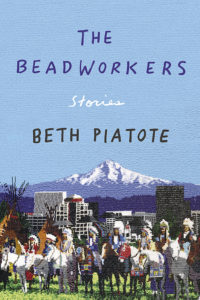
The Beadworkers by Beth Piatote
(Counterpoint, 10/22)
This debut collection of contemporary writing from writer and scholar Dr. Beth Piatote (Colville Confederated Tribes) ranges in form from short stories to poetry to plays (the final chapter is a reimagining of Antigone). Some of the stories are historical fiction, including a story about an 11-year-old girl during the 1960s Fish Wars in the Pacific Northwest, and one about a mixed French-Lakota and a French boy who are college roommates in Boston in 1890 when the massacre at Wounded Knee occurs. No matter what form Piatote takes in her storytelling, the fiction here is gripping and utterly readable. From migrant workers on their own land, to a woman recounting a broken relationship to her niece as she teaches her beadwork, the stories here are wide-ranging but encompass many perspectives of Indigenous people in North America.
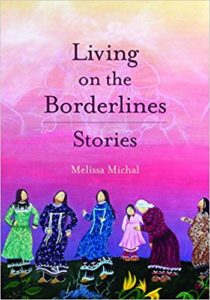
Living on the Borderlines by Melissa Michal
(Feminist Press)
Melissa Michal’s debut short story collection centers on people of Seneca descent mostly living in what is now called upstate New York, but also in New York City mansions, Nebraska footpaths, BC islands, and rural Tennessee. The stories and characters vary widely in point of view, and as the title implies, they dance along borderlines, along a constant reckoning with a colonialist and racist society. But in addition to their broad experiences and world views, the characters all deal with themes of family, history, tradition, and intergenerational trauma.
The familial relationships here are strong and tender, no matter who they bond: long-lost siblings, grandparents and grandchildren, spouses and friends, the dead and the living. Melissa Michal has created potent stories around all of them, with disturbing and beautiful elements all at once. All of the characters, even in the shortest stories, are full of depth and nuance, making this one of the more underrated short story collections of the year.
Memoir and Nonfiction

Black Indian by Shonda Buchanan
(Wayne State University Press)
What does it mean to be both Black and Indigenous in America? What does it mean to be of tri-racial descent? Shonda Buchanan dives deep into her identity and inheritance in this shining memoir. Raised as a Black girl but told stories of her multiracial heritage throughout her childhood, Buchanan calls her book “an attempt to expand, reclaim, and celebrate narratives of the African American experiences as well as the American Indian experiences” that inform her sense of self. In stunning, poetic prose, across landscapes and cultural sagas, Buchanan travels back into her family lineage to see what she can unearth. In examining the stories of Indigenous people and formerly enslaved Black migrants marrying and making families, her European heritage, and all the beautiful and troublesome aspects of what is ultimately American history, Buchanan explores where, and with whom, her family itself is rooted. The result is both a poignant personal narrative and a broader cultural one. In these pages, Buchanan has gifted the world an exquisite and totally engrossing memoir that traverses the meanings of family, legacy, and identity.
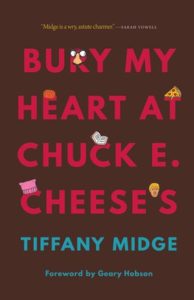
Bury My Heart at Chuck E. Cheese’s by Tiffany Midge
(University of Nebraska Press/Bison Books)
Tiffany Midge is the award-winning author of the poetry collections The Woman Who Married a Bear and Outlaws, Renegades & Saints; a citizen of the Standing Rock Sioux tribe; and the poet laureate of Moscow, Idaho. In this collection of short essays, Midge uses humor to examine complex identity, feminism, privilege, and politics, through both the personal (losing her mother) to the seemingly mundane (the existence of pumpkin spice everything). From Tweets as Assigned Texts for Native American Studies Course (“White people. The original manspreaders. Manspreading the North American continent since 1492″) to a takedown of The Handmaid’s Tale that really should be discussed more in the mainstream, the pieces here strike a strong balance between the insight and and intuitive sense of humor required for great comedy. This book is not a 101 lesson on Indigeneity for white people. It is incisive and smart, and the writing will make you laugh, think, and feel deeply, no matter what your identity markers.
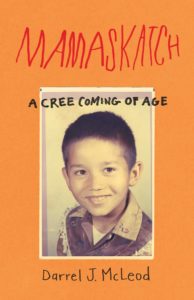
Mamaskatch by Darrel J. McLeod
(Milkweed Editions)
This book is truly a life story; narrated in first person by McLeod (Cree), it is told from his perspective, but includes many other characters who are deeply rendered with care and empathy. The narrative starts with an account of his mother Bertha’s time in, and dramatic escape from, a Canadian residential school along with her sisters and cousins. This is an important setup, as it immediately establishes the theme of the ingrained, pervasive, and evil legacy and trauma of colonialism and white supremacy inflicted on Indigenous people of North America. McLeod writes about Catholicism throughout, first finding meaning in it, then rejecting it as white brainwashing that erases Indigenous cultures through fearmongering, forced loss of language, racism, homophobia, sexism, etc. This itself is very powerful, but it’s far from the only pillar of this story. As he grows from a curious, loyal, and happy child in rural Alberta hearing stories from his grandfather and loving the outdoors, McLeod’s life blooms and withers in turns. Through violence and abuse, love and joy, McLeod drifts in and out of close contact with his family members, and meanwhile explores/struggles with his own sexuality and the gender transition of both his sibling and cousin. He writes poignantly about how whiteness and Catholicism drastically—and negatively—changed how gender nonconforming, trans, and sexually fluid people are viewed and treated in Indigenous communities, even within the span of a single generation.
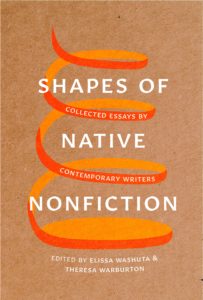
Shapes of Native Nonfiction, edited by Elissa Washuta & Theresa Warburton
(University of Washington Press)
This new collection of essays from established and emerging contemporary Indigenous writers is stunning both in depth and scope. With pieces from such well-known writers as Terese Marie Mailhot, Tiffany Midge (whose Bury My Heart at Chuck E Cheese’s is on this list), Eden Robinson, Alicia Elliott, Laura Da´, Ernestine Hayes, and Deborah A. Miranda, this book has more than enough literary cred to be an automatic must for most readers. But the collection, expertly curated and structured by writer and Cowlitz Indian Tribe member Elissa Washuta (whose incredible essay Apocalypse Logic also appears here) and literary scholar Theresa Warburton, shines in every piece and in its existence as a whole. In fact, the whole is the point: the editors employ the art of basket weaving in their approach to crafting the book, emphasizing the mutually dependant ideas of form and function, of the basket and the essay as vessels whose craft is as important as what it contains. Naming the four sections of the book after basket weaving craft—Technique, Coiling, Plaiting, and Twining—the pieces within it are experimental and innovative, lyrical and world-building. In these pages, storytelling is a way of developing new Native nonfiction literary possibility.
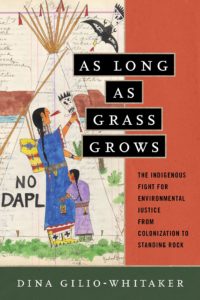
As Long as Grass Grows: The Indigenous Fight for Environmental Justice, From Colonization to Standing Rock by Dina Gilio-Whitaker
(Beacon)
Dina Gilio-Whitaker (Colville Confederated Tribes) is the co-author with Roxanne Dunbar-Ortiz (who also appears on this list) of “All the Real Indians Died Off” and 20 Other Myths About Native Americans; the policy director and senior research associate at the Center for World Indigenous Studies; and a college professor. In this short but dense primer, Gilio-Whitaker brings her vast knowledge and experience to the page as she charts the history of environmental (in)justice (EJ) in North America since colonization. The book opens with a detailed account of Standing Rock and moves outward, highlighting the ways in which western colonial expansion, the Industrial Revolution and its legacy, and the mainstream EJ movement continue to exclude, marginalize, harm, indeed kill, First Nations people. Drawing connections between Indigenous health, sacred sites, and the essential leadership of Indigenous women, she illustrates capitalism as a manifestation of settler colonialism that is fundamentally incompatible with Indigenous ways of thinking/being and, therefore, with environmental justice. Gilio-Whitaker makes a comprehensive, urgent and compelling argument for the indigenization of the EJ movement.
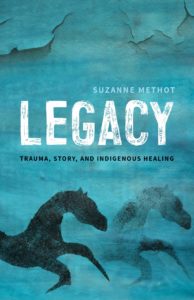
Legacy: Trauma, Story, and Indigenous Healing by Suzanne Methot
(ECW)
Author, educator, facilitator, editor, and speaker Suzanne Methot (Nehiyawak) uses data as a jumping-off point for this beautifully written book about strategies for healing from intergenerational trauma. Indigenous communities have higher rates of depression, addiction, and other chronic illnesses than other North Americans. The first sentence of the book reads, “Indigenous people do funerals really, really well.” Methot contends that amidst the individual and collective trauma that manifests these discouraging facts, healing comes from Indigenous ways of knowing—“respect, responsibility, reciprocity and relationships.” She discusses damaging, toxic patterns of behavior, thought, and physical illness as a direct result of unresolved grief and loss from colonialism and genocide, including the residential schools that fractured and isolated families and communities. Methot points out the importance of storytelling in both perpetuating trauma and in healing from it, and distinguishes between the linear stories of white settlers and the spiral stories of First Nations peoples. These spiral stories, she writes, have a more transformational, emotional narrative that can facilitate healing. It will be messy, emotional, and imperfect, she says, but necessary. In crystal-clear prose, Methot has written a book that is both easy to follow and crucial to read.
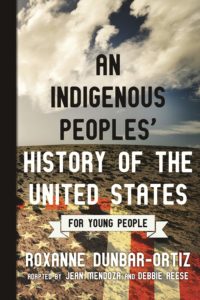
An Indigenous Peoples’ History of the United States for Young People by Roxanne Dunbar-Ortiz, adapted by Debbie Reese and Jean Mendoza
(Beacon)
Roxanne Dunbar-Ortiz’s An Indigenous Peoples’ History of the United States won the 2015 American Book Award and is a pillar text in the decolonization of the whitewashed historical narratives of most American education. This year, it got its adaptation for YA and middle grade readers from Debbie Reese (Nambe Owingeh educator and founder of American Indians in Children’s Literature) and Jean Mendoza (curriculum specialist focusing on representation of Indigenous people in children’s and YA literature). This is a wonderful example of how to write history in a way that is accessible to young readers without sacrificing nuance. The book opens with a straightforward and elegant explainer about implicit bias in language, such as the othering that occurs when words of an Indigenous language are written in italics. The book also uses images to great effect, from maps to photographs of Indigenous art and Indigenous resistance and activism. Importantly, they are put in context that contributes to unlearning the typical US history textbook of white supremacist and colonialist propaganda. The book as a whole deftly illustrates the history of colonialism and Indigenous communities, including pointing out that the democracy within Indigenous communities inspired key parts of the US Constitution. While it mostly covers history since colonization, the book includes pre-colonial history as well. With “Did You Know” boxes and exercise questions, An Indigenous Peoples’ History of the United States for Young People reads like a very accessible textbook and a wonderful introduction to Indigenous history of North America for young readers.

